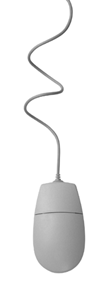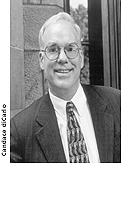

Dean's Column
By Dean Samuel H. Preston
Rapid advances in information technology are changing how most of us work and live. No institutions will be more profoundly affected by these changes than universities, which are at the very center of the information economy. Universities create, transmit, and store knowledge for the public good, and it is vitally important that we harness the remarkable progress in technology to do what we do even better.

The opportunities to improve our practices are especially compelling in the area of teaching and learning. Electronic media are not just a superfluous kit of high-tech bells and whistles. They offer teachers the opportunity to structure and guide the work of students outside the classroom, and they make available assessment tools, such as tests and surveys, that can be used to grade students, to give them feedback on self-paced exercises, and to give teachers the feedback they need to direct instructional efforts more effectively. The new media also provide a format for both collaborative and independent projects as well as access to large-scale and remote databases.
Our faculty are moving forward with new and promising strategies for adapting this technology to instructional programs. Currently, the School’s Distributed Learning Venture Fund provides startup and development costs to help faculty realize creative ideas for transforming traditional courses with technology. Grants of up to $10,000 per course are being awarded to faculty who propose innovative ways of using technology to enhance their work as teachers. The fund is meant to support visionary instructors who are prepared to lead the way in exploiting educational technology beyond standard tools like discussion boards and course webpages that are already used extensively in the classroom.
In the spring, the first Dean's Award for Innovation in Teaching was presented to Cristle Collins Judd, an assistant professor of music who has embraced technology as a tool for enhancing how and what students learn. She has envisioned and helped build a computer-assisted laboratory for music instruction. The facility allows hundreds of students each week to carry out music recognition drills, study musical examples, and work with instructors. It has become a model for similar labs at Chicago and the Eastman School of Music. Cristle has also developed a multi-media coursepack that includes interactive exercises, and her course websites allow students to do drills on notation and theory, listen to soundfiles, and study analyses of musical compositions, all of which augment her work with students in the classroom.
The Department of Mathematics received the Kahn Award for Educational Excellence in large part for its integration of the Maple software program for teaching introductory calculus. The department has successfully provided calculus instruction to a large body of non-math majors who study calculus as part of their programs in engineering or business, or for their studies here in SAS in the physical, biological, and social sciences. This technology and other forms of online help, which students can access from their residences, are important complements to traditional classroom instruction and have helped make the math department a world class teaching department.

The School encourages the widespread use of information technology in the form of online syllabi, readings, problem sets, and other materials. We are also encouraging more use of electronic opportunities for student-teacher and student-student interaction. We’ve begun exploring new partnerships with other Penn schools, such as Wharton and Engineering, and with other savvy technology users, such as the library, to find ways to use technology more effectively. We are just beginning to see all the possibilities being opened up to creative users of these astonishing tools.
Integrating the new electronic means of creating, transmitting, and storing information into its educational programs is essential if the School of Arts and Sciences is to maintain its position among the world’s top teaching institutions. There is no more important issue facing the School in the next several years.